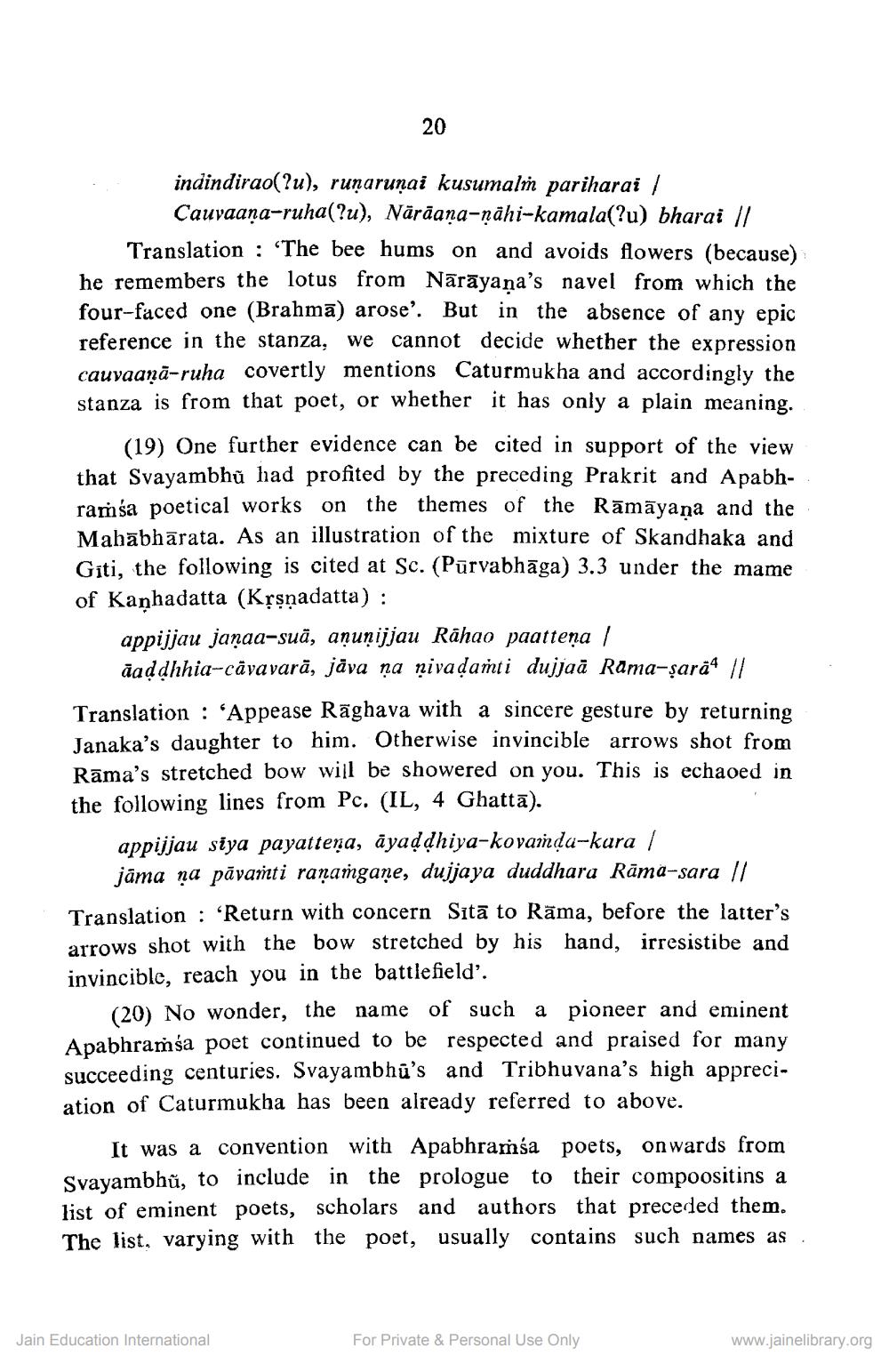________________
20
indindirao(?u), runaruņai kusumalm pariharai /
Cauvaana-ruha(?u), Näräana-ạähi-kamala(?u) bharai // Translation : ‘The bee hums on and avoids flowers (because) he remembers the lotus from Nārāyaṇa's navel from which the four-faced one (Brahma) arose'. But in the absence of any epic reference in the stanza, we cannot decide whether the expression cauvaanā-ruha covertly mentions Caturmukha and accordingly the stanza is from that poet, or whether it has only a plain meaning.
(19) One further evidence can be cited in support of the view that Svayambhủ had profited by the preceding Prakrit and Apabhramsa poetical works on the themes of the Rāmāyaṇa and the Mahābhārata. As an illustration of the mixture of Skandhaka and Giti, the following is cited at Sc. (Pūrvabhāga) 3.3 under the mame of Kanhadatta (Kșsəadatta) :
appijjau jamaa-suă, anunijjau Rāhao paatteņa /
aaddhhia-cāvavarā, jāva ņa ņivadati dujjaā Rama-şarā4 l/ Translation : Appease Rāghava with a sincere gesture by returning Janaka's daughter to him. Otherwise invincible arrows shot from Rāma's stretched bow will be showered on you. This is echaoed in the following lines from Pc. (IL, 4 Ghattā).
appijjau siya payattena, āyaddhiya-kovaida-kura /
jāma ņa pāvanti raṇamgane, dujjaya duddhara Rāma-sara // Translation : Return with concern Sitā to Rāma, before the latter's arrows shot with the bow stretched by his hand, irresistibe and invincible, reach you in the battlefield'.
(20) No wonder, the name of such a pioneer and eminent Apabhraṁsa poet continued to be respected and praised for many succeeding centuries. Svayambhu's and Tribhuvana's high appreciation of Caturmukha has been already referred to above.
It was a convention with Apabhramsa poets, onwards from Svayambhữ, to include in the prologue to their compoositins a list of eminent poets, scholars and authors that preceded them. The list, varying with the poet, usually contains such names as
Jain Education International
For Private & Personal Use Only
www.jainelibrary.org




